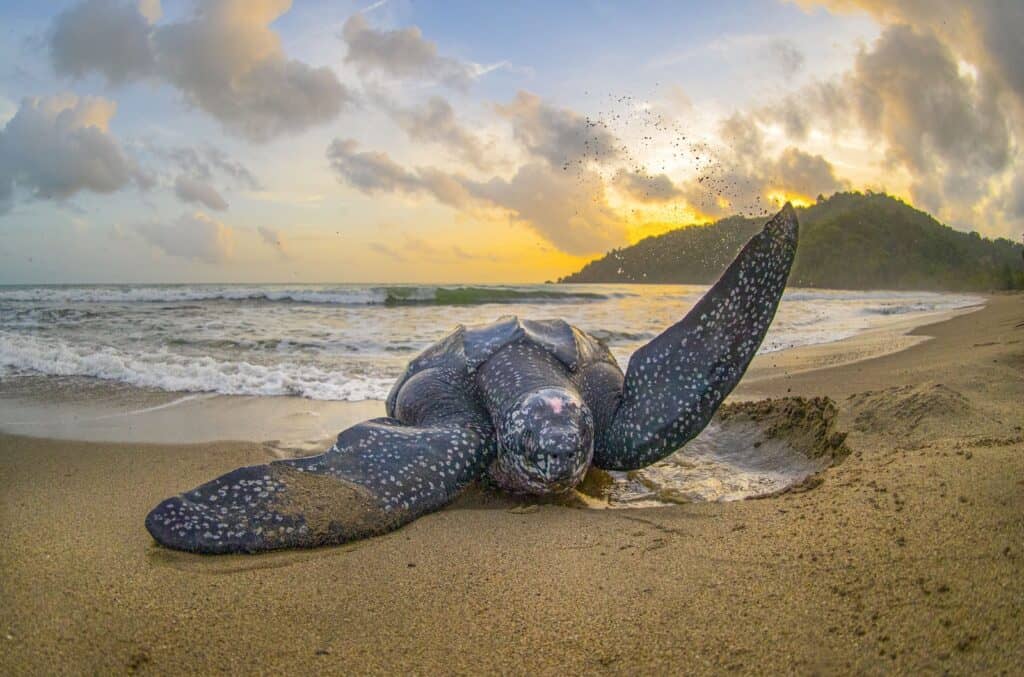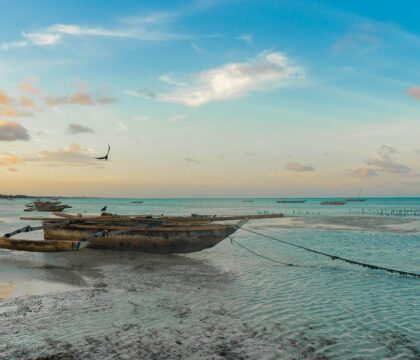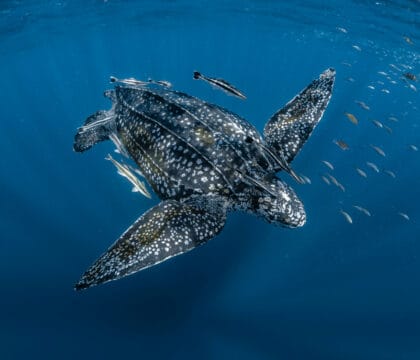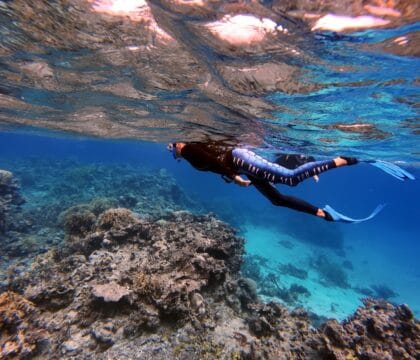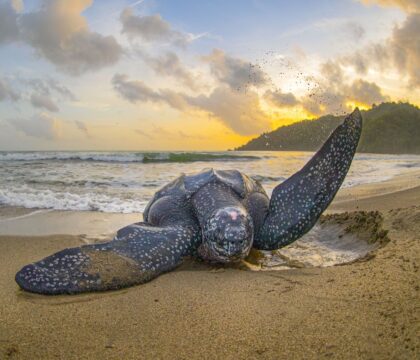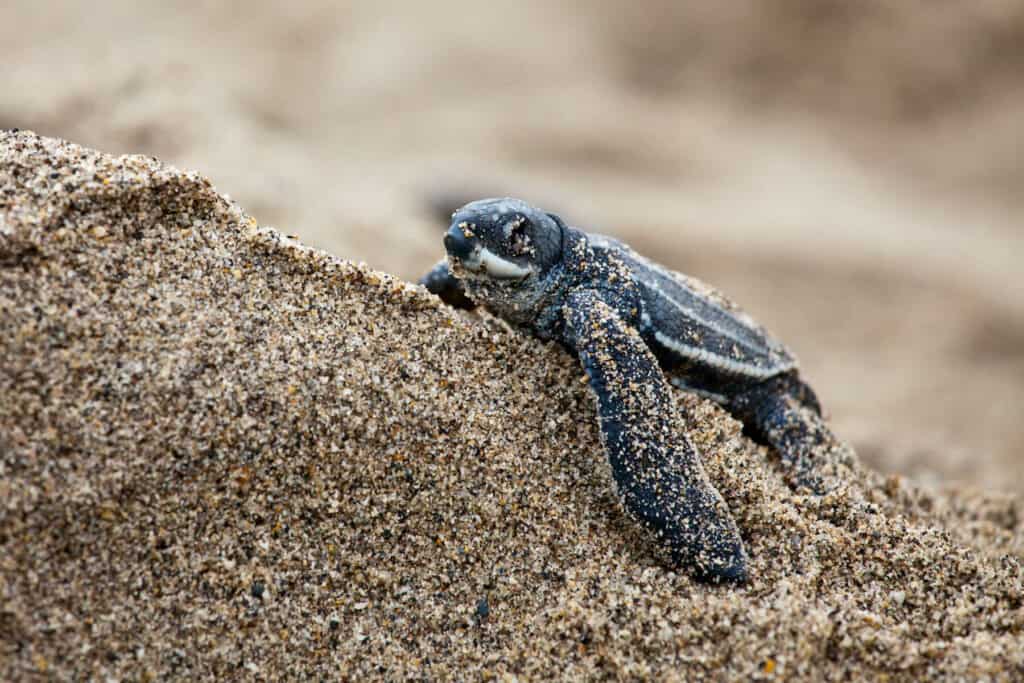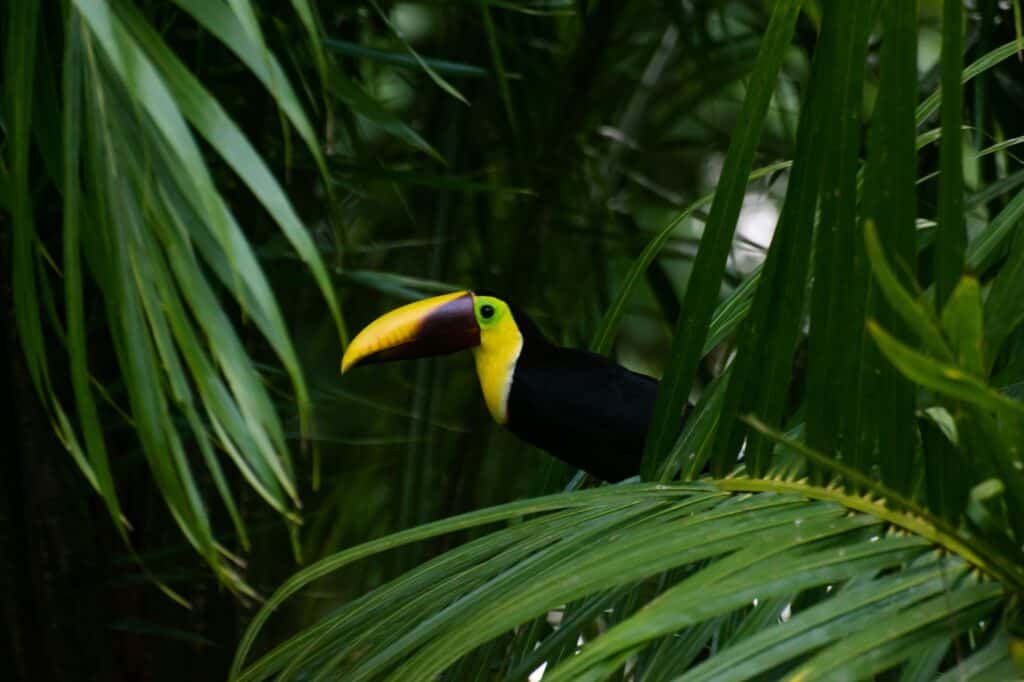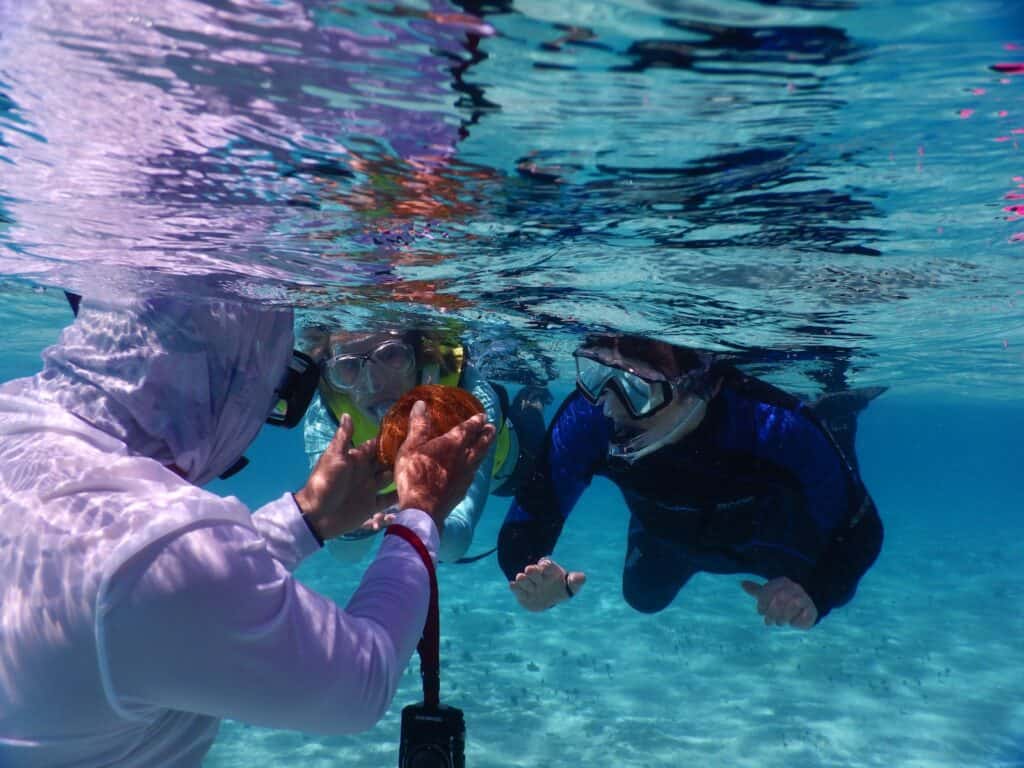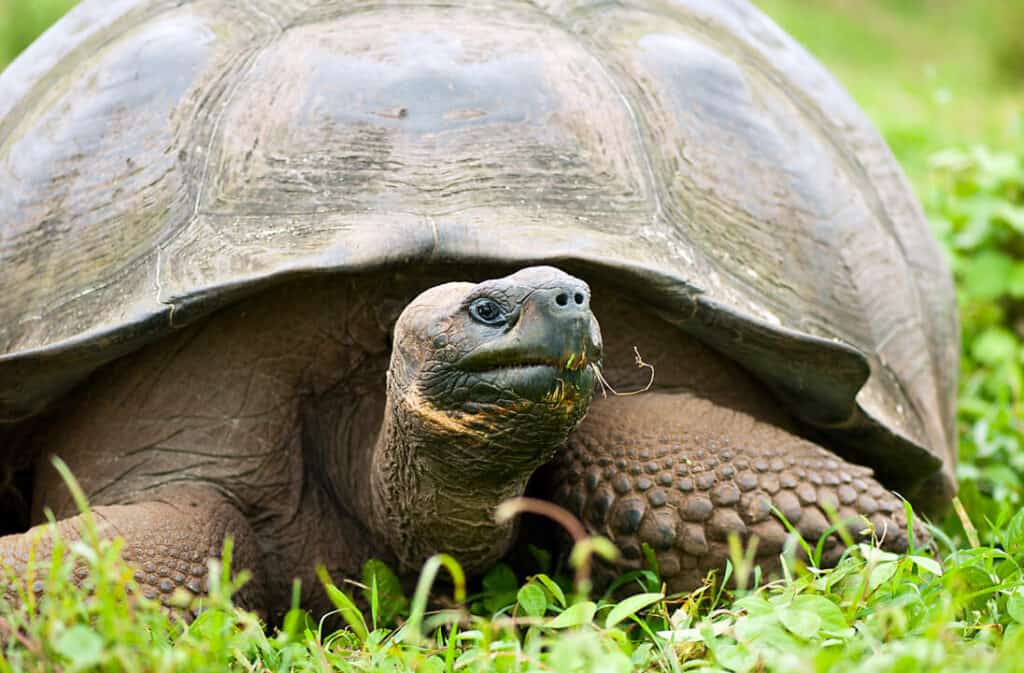October 15, 2025 • News Announcements
Given our longstanding commitment to global sea turtle conservation, we are especially pleased to share the news that the green sea turtle (Chelonia mydas) has improved in status from Endangered to Least Concern according to the latest update to the IUCN Red List of Threatened Species. This remarkable achievement reflects decades of dedicated conservation efforts worldwide.
After more than four decades listed as Endangered (since 1982), this momentous change, announced last week at the IUCN World Conservation Congress in Abu Dhabi, reflects the fact that the global green turtle population has increased significantly in recent decades. It’s a powerful reminder that when we act with determination and coordination, we can reverse the trajectory of species decline.
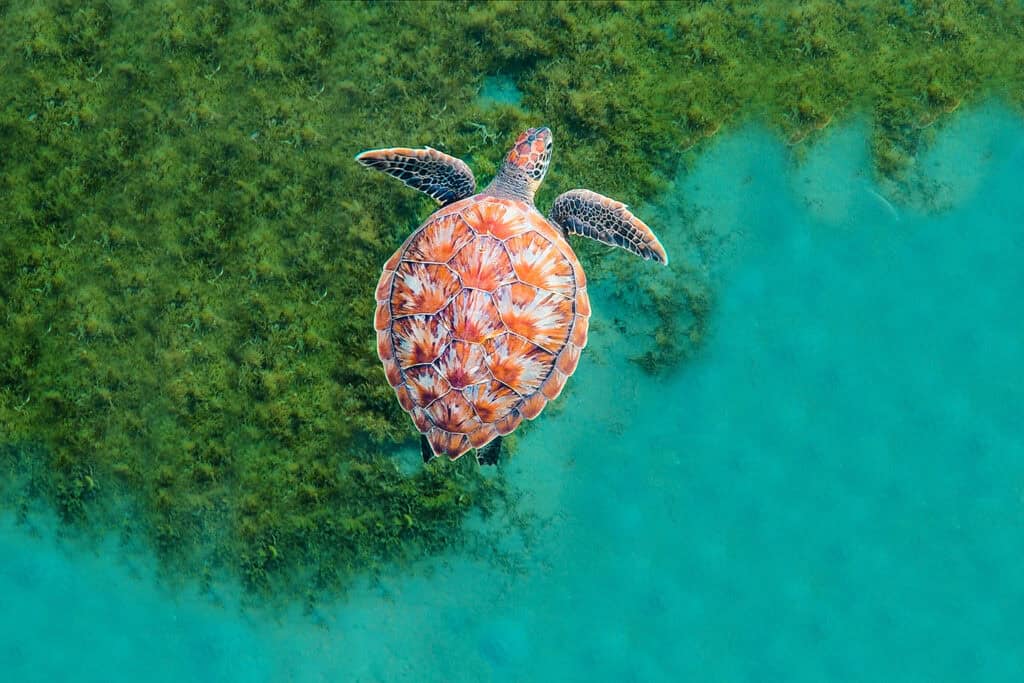
Green turtles are now considered ‘Least Concern’ by the IUCN thanks to decades of international conservation effort at all scales. The species was previously considered ‘Endangered’ since 1982. © Michele Roux / Ocean Image Bank
What the Green Turtle’s Status Improvement Means
The move of the green turtle into the Least Concern category is based on robust data showing that the global population of green turtles has increased by approximately 28% since the 1970s, even as many threats remain. Their recovery has been driven by comprehensive conservation strategies implemented over decades, including:
- Protecting nesting females and their eggs on beaches
- Community-based programs to reduce unsustainable harvest of turtles and eggs
- Curtailing trade in turtle products
- Implementing Turtle Excluder Devices and other measures to reduce accidental capture in fishing gear
Conservation efforts in places like Ascension Island, Brazil, Mexico, and Hawai’i have been particularly successful, with some populations rebounding to near pre-commercial exploitation levels.
“The ongoing global recovery of the green turtle is a powerful example of what coordinated global conservation over decades can achieve to stabilize and even restore populations of long-lived marine species.”
– Roderic Mast, President, Oceanic Society
The Work Must Continue
While this is undoubtedly cause for celebration, it’s important to recognize that this success is not a finish line, but rather an important milestone on an ongoing journey. The conservation measures that brought green turtles back from the edge must continue if we want to maintain this positive trajectory.
In spite of their recent population growth, green turtle populations are still significantly depleted compared to their abundance before European colonization and widespread exploitation. Today, they still face serious threats, including:
- Direct harvest of turtles and eggs in some regions
- Fisheries bycatch
- Coastal and marine development that damages critical habitats
- Climate change impacts on nesting beaches and marine habitats.
In particular, some regional subpopulations remain at significant risk. For example, the Southwest Pacific subpopulation, which includes the world’s largest nesting rookery at Raine Island, Australia, has experienced several years of declining hatchling production due to erosion and nest inundation associated with climate change.
Sustained investment, local community engagement, and adaptive management remain crucial to keep the green turtle on a positive trajectory.
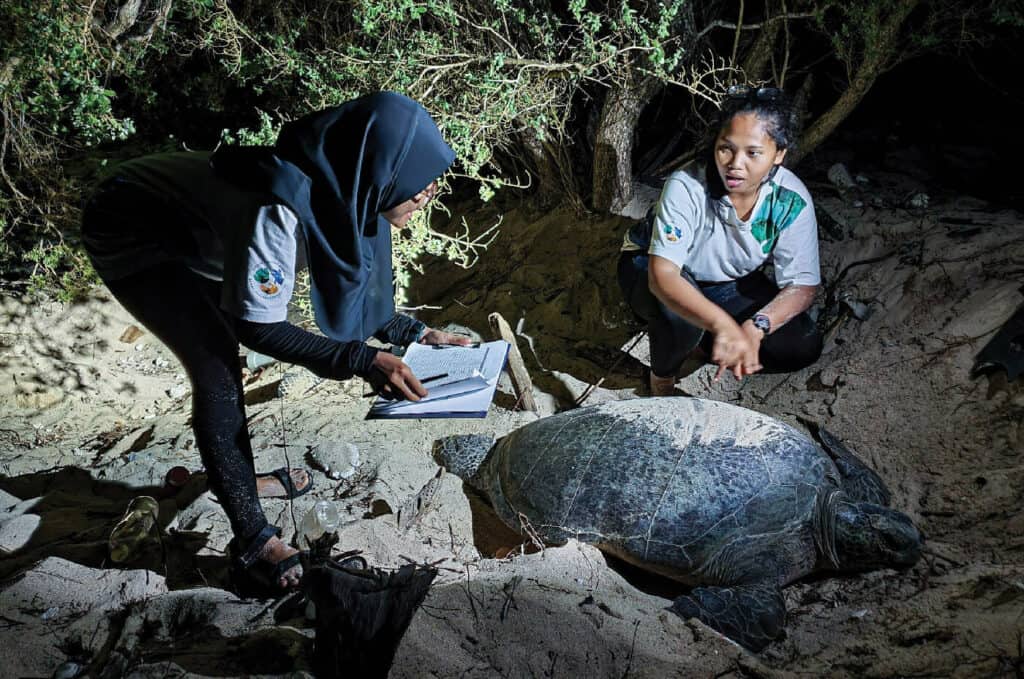
Researchers from the Anambas Foundation, supported by Oceanic Society in 2024, collect data on a nesting green turtle in Indonesia. Sustained global conservation efforts are needed to keep the green turtle on a positive trajectory. © Anambas Foundation
Oceanic Society’s Role in Sea Turtle Conservation
Oceanic Society’s sea turtle work is deeply embedded in the IUCN-SSC Marine Turtle Specialist Group (MTSG), which led the new assessment, and related global efforts. Through our State of the World’s Sea Turtles (SWOT) program, we maintain a global database of sea turtle status and support conservation decision-making, often in partnership with MTSG.
Our staff serve in leadership roles in the MTSG, helping ensure that the group’s scientific output and priority setting contribute to conservation decision making at multiple scales. These roles allow Oceanic Society to help shape Red Listing and other priority setting efforts to guide the conservation community.
Moreover, our financial support to on-the-ground conservation efforts, including nesting beach protection, community engagement, bycatch mitigation, outreach, and more, works in parallel with these high-level scientific processes to translate priorities into action.
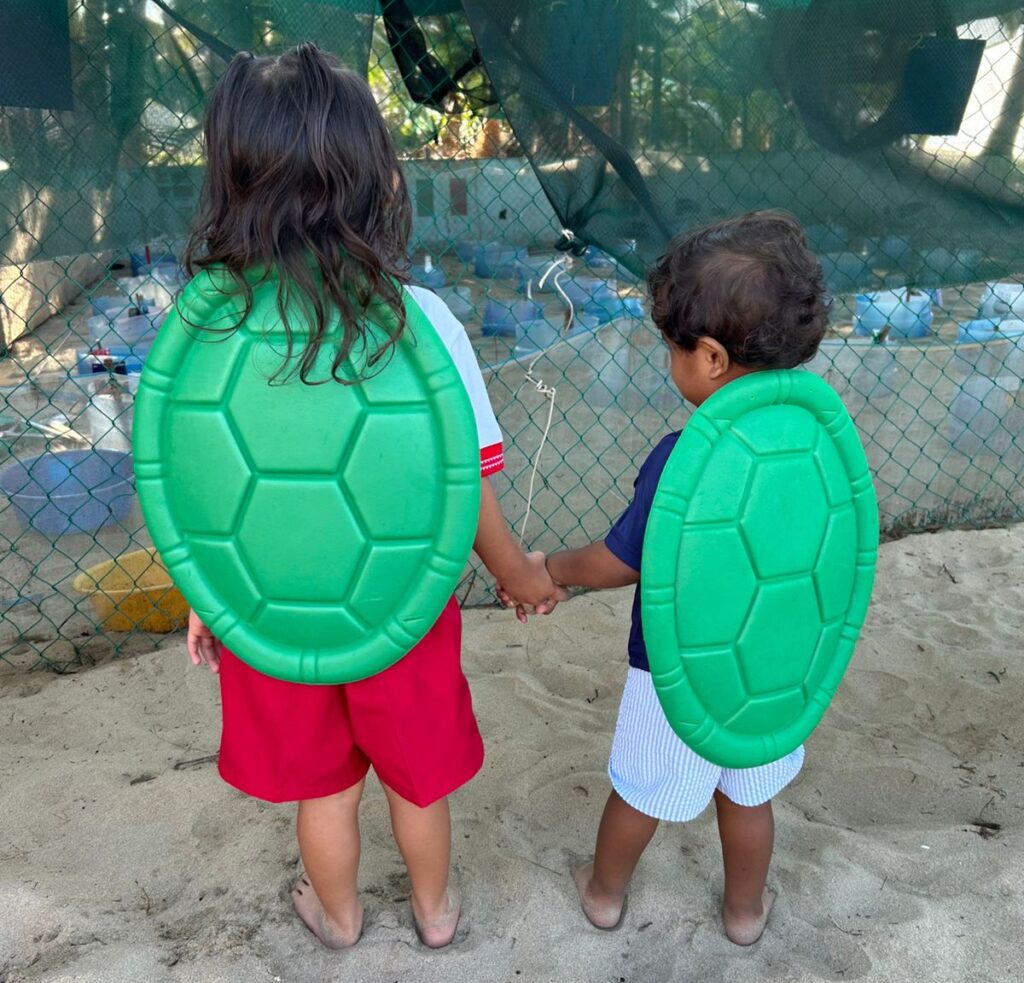
In addition to supporting high level status assessments and priority setting for sea turtles, Oceanic Society provides financial support to conservationists working in communities worldwide. A 2025 grant to Campamento Tortuguero Ayotlcalli in Mexico is bolstering their work to inspire a new generation of sea turtle stewards.
A Vision for the Future
As Oceanic Society president, Roderic Mast, emphasizes, effective sea turtle conservation must focus not only on the turtles themselves but on “keeping their habitats healthy, and their ecological functions intact. Sea turtles cannot survive without healthy oceans and coasts, and humans can’t either.”
The green turtle’s recovery demonstrates what’s possible when conservationists, governments, local communities, scientists, and organizations work together over the long term. It’s a testament to persistence, partnership, and the power of science-based conservation action.
At Oceanic Society, we remain committed to advancing sea turtle conservation through our investments in both global and local conservation efforts in high-priority areas. This achievement inspires us to continue our efforts, not only for green turtles, but for all marine species and the ocean ecosystems we all depend on.
The green turtle’s journey from Endangered to Least Concern proves that conservation works. Now, we must sustain that work to ensure this recovery story continues for generations to come.
Learn More About Sea Turtle Conservation
- Learn all about sea turtles in our Sea Turtles 101 video and Ultimate Guide to Sea Turtles.
- Learn more about Oceanic Society’s sea turtle conservation work here.
- Learn about the work of the IUCN-SSC Marine Turtle Specialist Group here.
Support Sea Turtle Conservation
Oceanic Society offers several ways for you to support sea turtle conservation. You can adopt a sea turtle species, name a leatherback turtle, name a satellite-tracked leatherback turtle, or make a donation in support of our conservation programs.
Looking to have a more hands-on conservation impact? Consider joining our sea turtle volunteer trip in Trinidad, offered every May. You’ll work side by side with local researchers to help study and protect leatherback sea turtles on the eastern shore of Trinidad.

